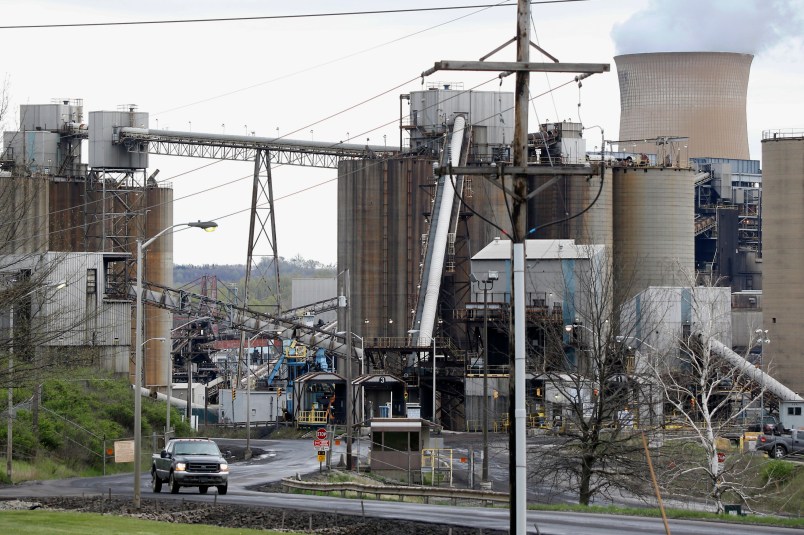President Obama’s EPA will issue proposed greenhouse gas limits for existing power plants. By all accounts the rules will be a remarkable step forward in the fight against global warming, with the U.S. finally demonstrating significant leadership on an issue on which it has lagged behind for more than a decade. And yet from what we know about the proposed rules, they are market and business-friendly in a way that press accounts so far have yet to emphasize.
Megan Herzog has already done a terrific job describing the proposed rules and their potential legal vulnerability here. My own view is that EPA is on solid legal ground in moving away from a traditional plant-by-plant basis of regulation and instead allowing states to meet statewide emissions limits through a variety of mechanisms, including renewable energy, energy efficiency, demand response and cap-and-trade. In fact in the most recent pronouncement from the Supreme Court about EPA’s ability to regulate, the Court, joined by six justices including Chief Justice John Roberts, emphasized the discretion the agency should have to resolve ambiguous provisions of the Clean Air Act:
We routinely accord dispositive effect to an agency’s reasonable interpretation of ambiguous statutory language (emphasis supplied).
I want to move away from the legal challenges the rules will undoubtedly face once finalized, however, and emphasize a different point. EPA has drafted a proposed rule that is meant to achieve greenhouse gas reductions in as cost-effective a way as possible and has proposed moderate, not extreme, cuts by 2030. Despite cries from coal producers, some utilities and Republicans in Congress, EPA could have taken a much less business friendly approach. Instead, here are the ways EPA has attempted to accommodate the interests of the electricity sector while nevertheless proposing cuts that are significant.
First, EPA apparently chose the utilities’ preferred baseline year, 2005 against which to measure a 30 percent emissions cut of existing power plant emissions by 2030. Indeed the Wall Street Journal argued several days ago that all of the action was in the baseline year chosen. Utilities wanted 2005 because emissions were especially high in the years immediately preceding the recession so that a 30 percent cut from 2005 levels would be far easier to achieve than a 30 percent cut from 2012. Not only did slower economic growth from 2008-2012 result in lower emissions but so did a dramatic drop in natural gas prices, leading to a big shift in electricity generated from natural gas rather than coal. Natural gas emits only about half the emissions as coal when combusted. The 2005 base year is a big victory for industry. In fact, the total reductions the new proposed rules will achieve are actually lower than what the President committed to in international talks in Copenhagen in 2009. For this reason, Grist is reportingthat the rules will fall short of what the environmental community wanted.
Second, several of the reduction measures allowed under the proposed rules are remarkably cost-effective. Reducing emissions by installing energy efficiency measures, for example, is significantly cheaper than installing plant by plant control technologies. Similarly, some renewable energy sources, including wind and solar, are quickly approaching the cost of conventional fuels. And measures to reduce demand through innovations like price incentives and time-of-day pricing can, again, be extraordinarily cost-effective (Joel Eisen explains a recent demand response case in detail here).
Third, the proposed power plant rules will apparently allow states to opt into state cap-and-trade programs. The idea behind cap-and-trade, explained here, is to allow emitters to find the cheapest mechanisms to reduce greenhouse gas emissions through market mechanisms rather than dictating particular control technologies. As I noted in a post earlier today, utility executives have offered praise for this component of the rules, saying that “by trading on carbon credits, we’ll be able to achieve significantly more cuts at a lower cost,” and “we view cap and trade as having a lot of benefits.”
So tomorrow, if you read that the U.S. Chamber of Commerce says that the proposed new rules will cost the economy $50 billion to implement, be very, very skeptical. Resources for the Future has found significant errors in that study and NRDC has produced a study showing that the rules will actually save consumers money and create jobs in energy efficiency and renewable energy installations. The Administration has worked hard to accommodate utility concerns and has produced a set of proposed rules that go a long way toward producing affordable, cost-effective cuts in the emissions that are heating the globe.


